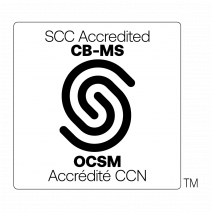VPN Connectivity with Multi-Factor Authentication: Control Requirement 5.7.3.4
Control Requirement 5.7.3.4 from the CAN/DGSI 104:2021 Rev 1 2024 standard emphasizes the necessity for encrypted connectivity and VPN access with multi-factor authentication (MFA) for remote access to corporate networks. This requirement is crucial for maintaining the integrity and security of sensitive data.
Understanding Encrypted Connectivity
Encryption is the process of converting data into a code to prevent unauthorized access. By requiring encrypted connectivity to all corporate IT resources, organizations ensure that data transmitted between devices and servers is secure. This measure protects against data breaches and cyber-attacks, ensuring that sensitive information remains confidential. Encryption can be implemented at various levels, including data at rest, data in transit, and data in use. For instance, using SSL/TLS protocols for web traffic, encrypting emails, and securing databases are common practices.
The Role of VPN Connectivity
A Virtual Private Network (VPN) creates a secure connection over the internet, allowing remote users to access corporate networks as if they were directly connected to the internal network. VPNs use encryption to protect data transmitted over the internet, ensuring that sensitive information remains secure. This is particularly important for employees working remotely or accessing corporate resources from public networks. VPNs can also help in masking the user’s IP address, making it difficult for cyber attackers to track their online activities.
Multi-Factor Authentication: An Extra Layer of Security
While VPNs provide a secure connection, they are not foolproof. This is where multi-factor authentication (MFA) comes into play. MFA adds an extra layer of protection by requiring users to provide two or more verification factors to gain access. This could include something the user knows (like a password), something the user has (like a security token), or something the user is (like a fingerprint). By combining multiple factors, MFA significantly reduces the risk of unauthorized access, even if one factor is compromised.
Implementing Control Requirement 5.7.3.4
To comply with Control Requirement 5.7.3.4, organizations must take several steps:
Assess Current Security Measures: Evaluate existing security protocols to identify gaps and areas for improvement. This includes reviewing encryption methods, VPN configurations, and authentication processes.
Implement Encryption: Ensure that all data transmitted between devices and corporate IT resources is encrypted. This may involve updating software, configuring encryption settings, and training employees on best practices.
Deploy VPN Solutions: Set up VPNs for remote access, ensuring that they are configured to use strong encryption protocols. Provide employees with clear instructions on how to use VPNs and the importance of connecting through them when accessing corporate resources remotely.
Enable Multi-Factor Authentication: Implement MFA for all remote access to corporate networks. This may involve integrating MFA solutions with existing systems, distributing authentication tokens, and educating employees on the importance of using MFA.
Monitor and Maintain: Regularly review and update security measures to ensure they remain effective. This includes monitoring network traffic, conducting security audits, and staying informed about the latest threats and vulnerabilities.
Why This Matters
Implementing encrypted connectivity and VPN with MFA is not just about compliance; it’s about protecting the organization’s assets and reputation. Cyber threats are constantly evolving, and organizations must stay ahead by adopting robust security measures. By enforcing Control Requirement 5.7.3.4, companies can significantly reduce the risk of unauthorized access and data breaches. This proactive approach not only safeguards sensitive information but also builds trust with clients, partners, and stakeholders.
Conclusion
Incorporating encrypted connectivity and VPN with MFA into your organization’s security protocols is a proactive step towards safeguarding your digital assets. As cyber threats continue to grow, these measures will help ensure that your corporate network remains secure and resilient. By staying vigilant and continuously improving security practices, organizations can protect their valuable data and maintain a strong defense against cyber-attacks.

